Rajan Bijlani’s design collection is inspired by a mission to conserve the Chandigarh legacy
British-Indian collector Rajan Bijlani’s collection of unseen Le Corbusier and Jeanneret Chandigarh furniture collection is given new life
Norman Wilcox-Geissen - Photography
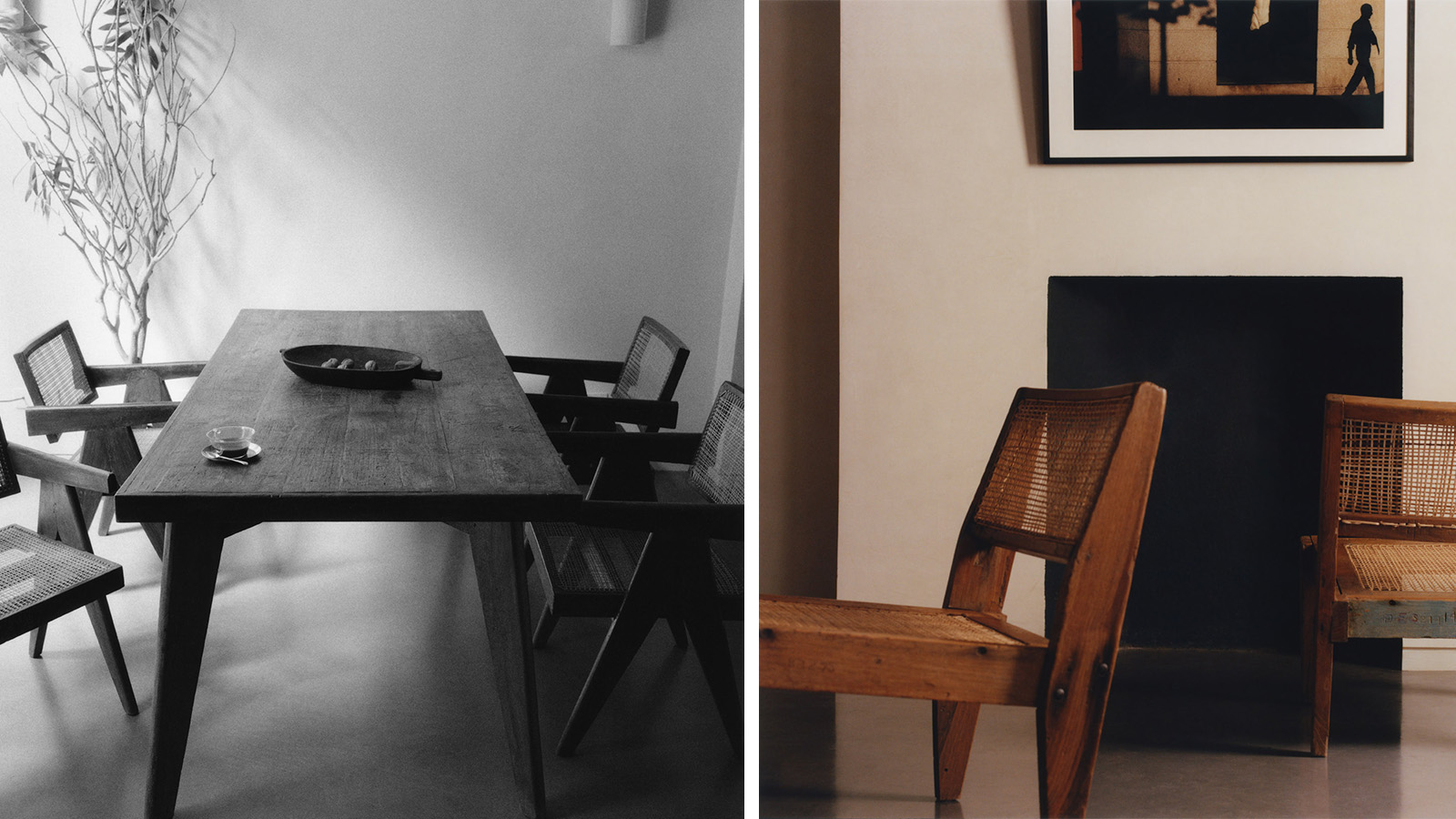
For the last 20 years, British-Indian collector Rajan Bijlani has been painstakingly tracking down furniture from the city of Chandigarh, designed by a group of modernists, led by Le Corbusier and Pierre Jeanneret. Located in the northern Indian state of Punjab, Chandigarh was conceived in 1947, when India and Pakistan partitioned and the British occupation ended. Jawaharlal Nehru, India’s first prime minister, sought to fashion a modern and forward-thinking country by building a city from scratch, commissioning Le Corbusier and Jeanneret to design the masterplan, many of the city’s main buildings and its furniture.
Crafted between 1954 and 1966 – primarily from teak and rosewood – the furniture is a unique fusion of Eastern and Western design, which Bijlani first started acquiring in 2004 in a collection that now amounts to around 500 pieces.
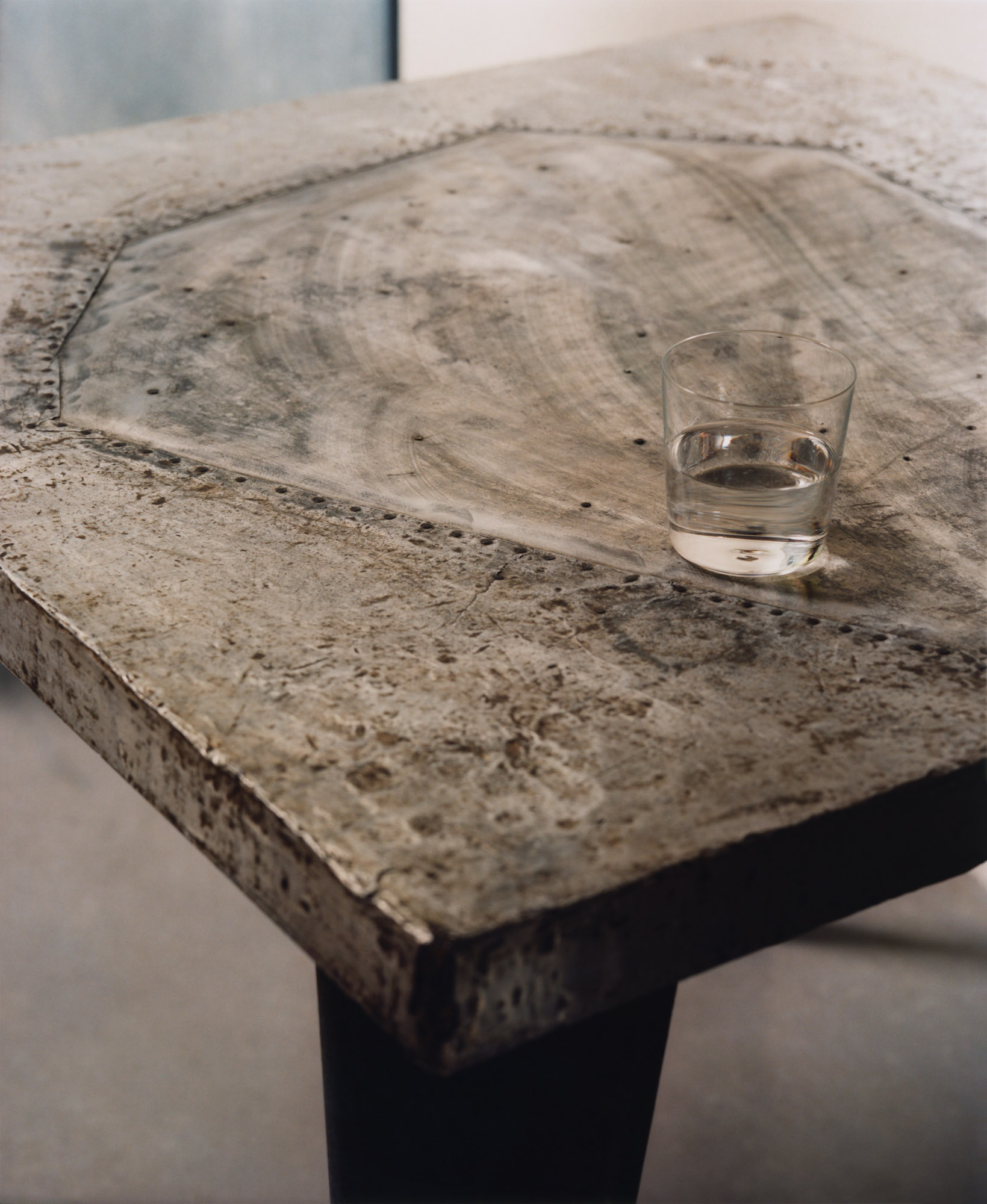
A teak and zinc table, 1959
‘It was quite amazing because it was all local materials, handmade by local carpenters and craftsmen who had these ancient skills, but designed by European modernist architects,’ he says. ‘I started collecting it to help conserve this design legacy, because it was not really being looked after, and because I loved the materiality of it, compared to the backdrop of the concrete and the brutalism of Le Corbusier’s architecture.’
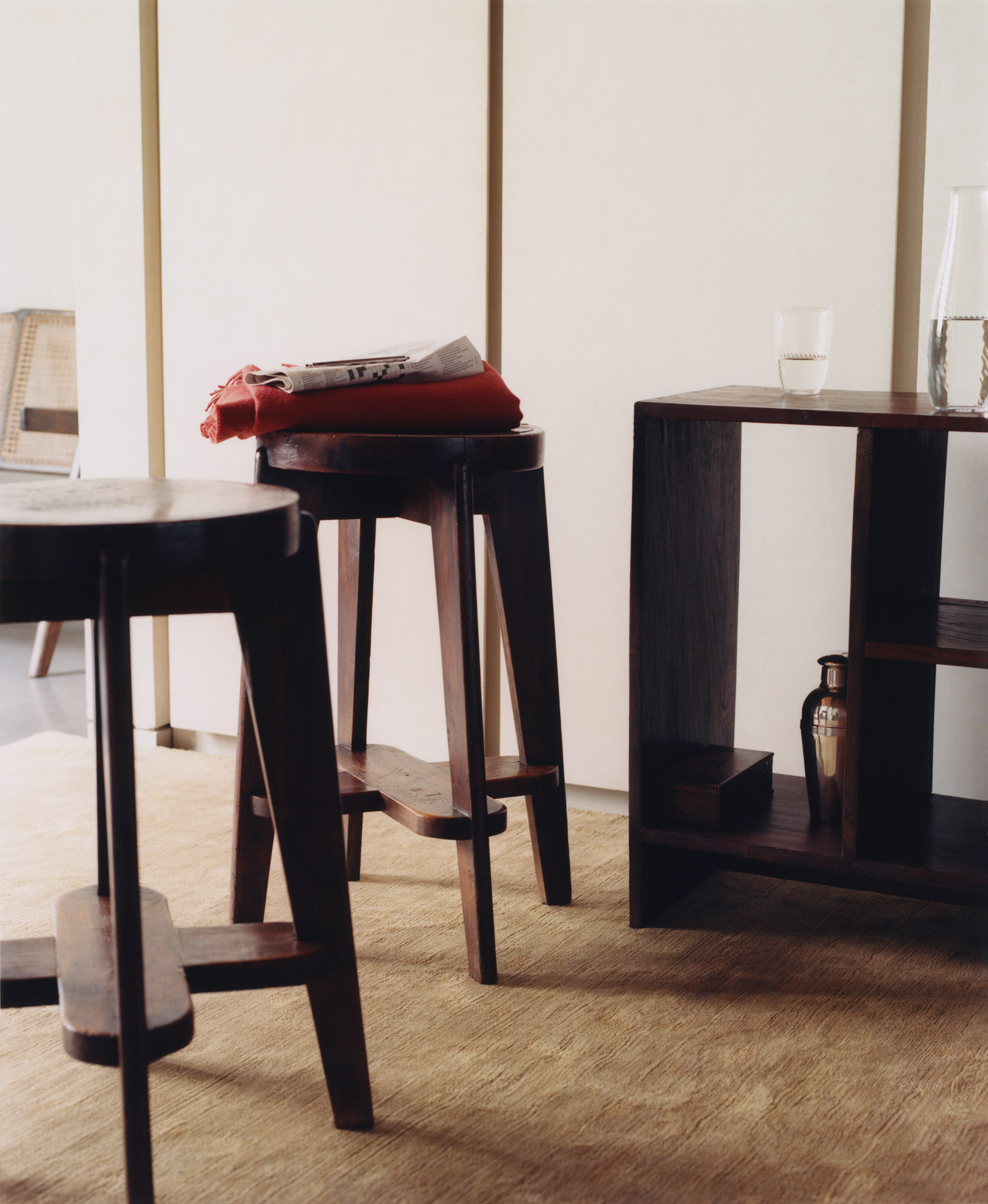
Bijlani exhibited part of his collection publicly for the first time in February during Nomad in St Moritz, presenting a fitting update to sofas and armchairs that had previously been upholstered in cowhide by European galleries. Collaborating with Loro Piana, the new pieces come in hues of ginger, earthy brown and soft grey.
‘The cow is sacred in India. It’s a very incongruous choice to use cowhide and it didn’t make sense, especially with me being Hindu,’ says Bijlani. ‘I started thinking of what would be synonymous with Punjab and, on a very clear day, you can see the Himalayas from Chandigarh, and so I thought of cashmere and pashmina.’
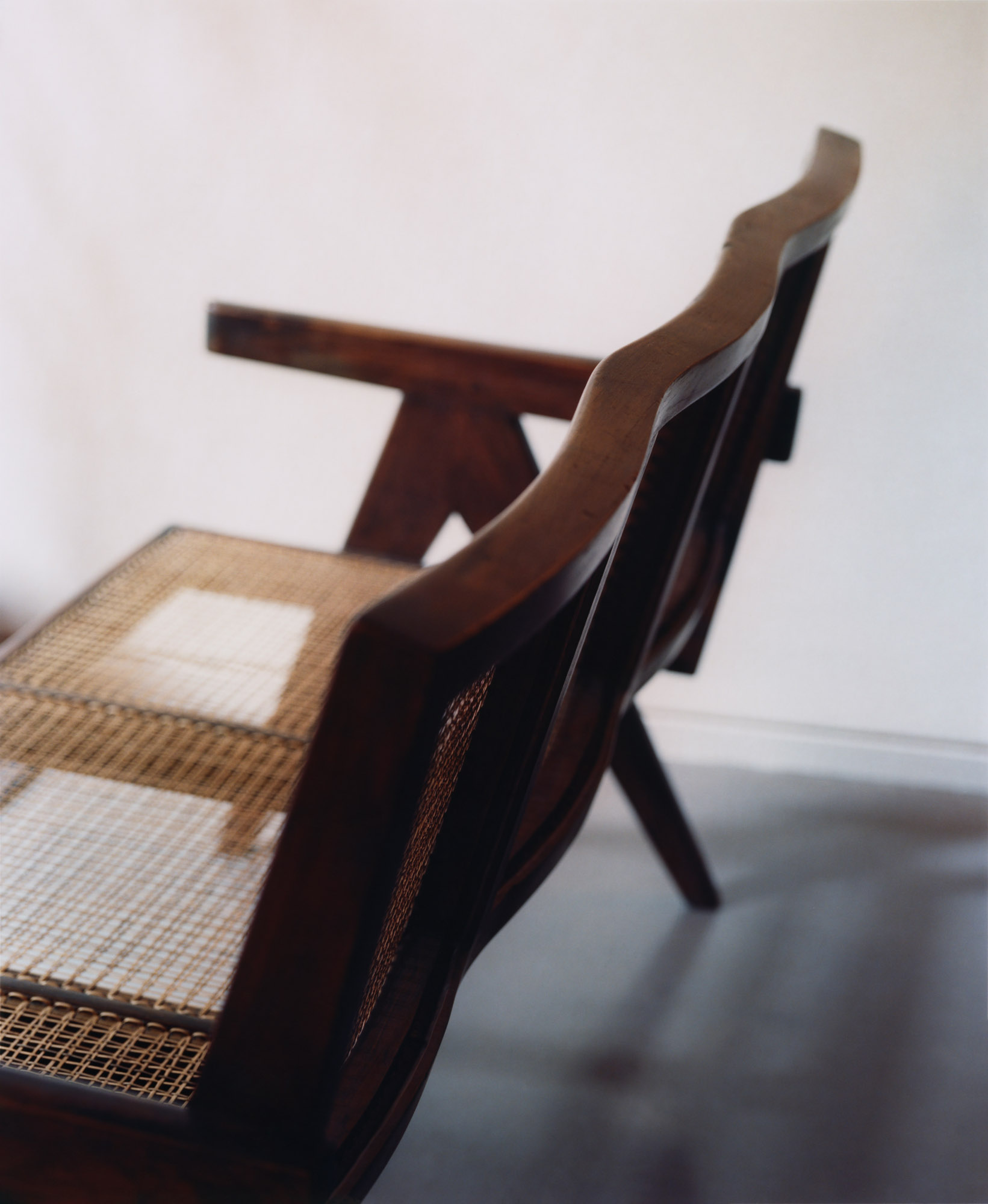
A teak and cane sofa, c1955
Standout pieces from the collection include some teak and zinc tables from the cafeteria at Chandigarh hospital and a library chair by Eulie Chowdhury, India’s first qualified woman architect, who worked with Jeanneret on furniture production. There are a pair of rarely-seen rattan chairs, from a private doctor’s house, which still have their original rattan in decent shape – a rare find after 70 years. Bijlani is also working with expert restorers to care for some of the pieces.
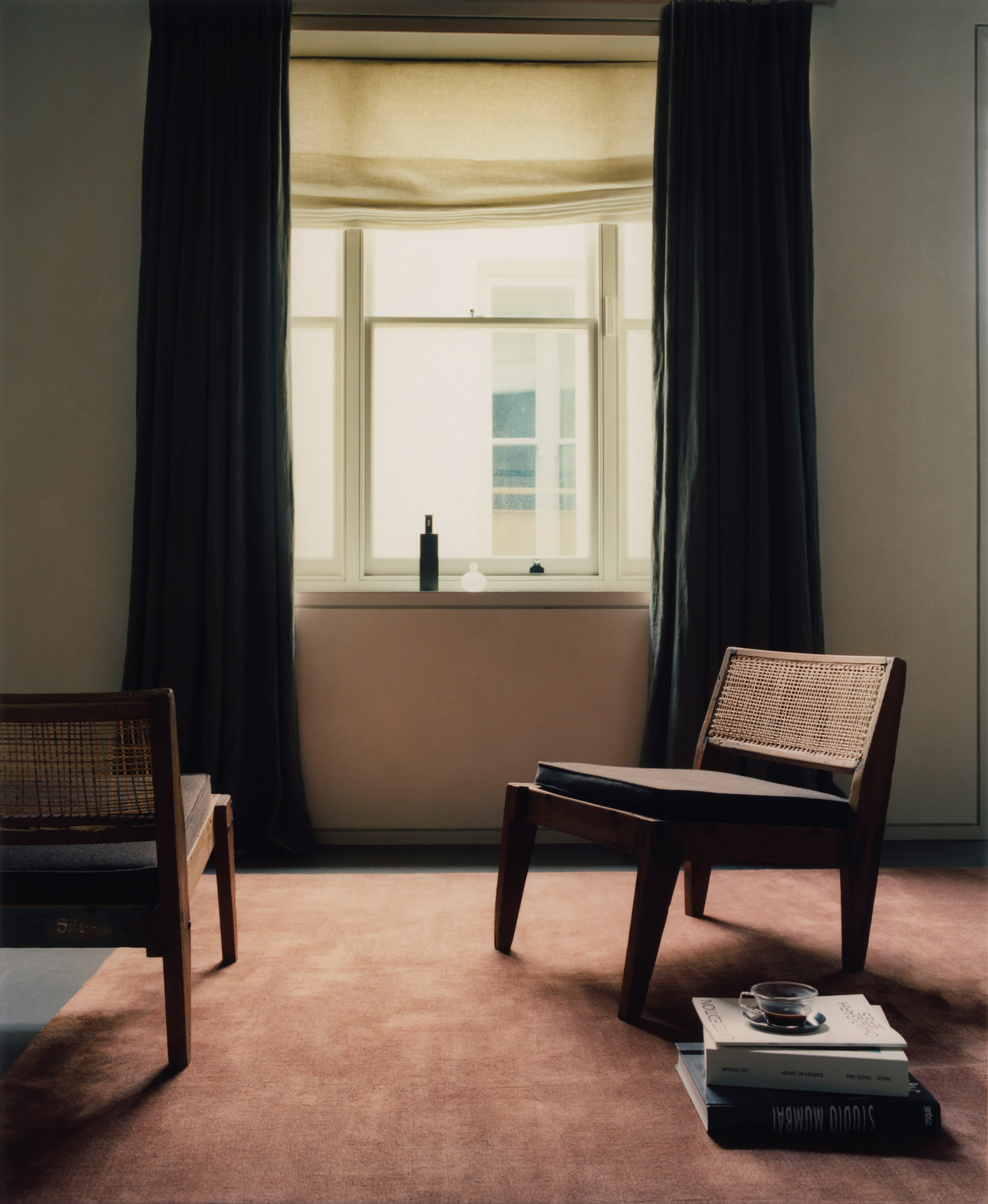
Teak and cane chairs, c.1955, by Pierre Jeanneret, with cashmere cushion by Loro Piana
‘This is such an important collection, which has never really been seen and is so well preserved. As a custodian, I want to support it by donating some pieces to cultural institutions, so that they can continue to be preserved,’ says Bijlani. ‘I want to make sure that there’s increasing awareness about the importance and the history of the collections. It’s been a very long journey, but it’s a process that’s been done with care, custodianship and passion.’
Receive our daily digest of inspiration, escapism and design stories from around the world direct to your inbox.
Maghie Ghali is a British-Lebanese journalist based in Beirut. She reports on arts, culture, travel, design, food, the environment and humanitarian issues, both regionally and internationally. As a freelance journalist, she has covered stories around the world for outlets such as Architectural Digest, Al Jazeera, The National, Frieze, Wallpaper* and others.
-
 Mexico's Office of Urban Resilience creates projects that cities can learn from
Mexico's Office of Urban Resilience creates projects that cities can learn fromAt Office of Urban Resilience, the team believes that ‘architecture should be more than designing objects. It can be a tool for generating knowledge’
-
 ‘I want to bring anxiety to the surface': Shannon Cartier Lucy on her unsettling works
‘I want to bring anxiety to the surface': Shannon Cartier Lucy on her unsettling worksIn an exhibition at Soft Opening, London, Shannon Cartier Lucy revisits childhood memories
-
 What one writer learnt in 2025 through exploring the ‘intimate, familiar’ wardrobes of ten friends
What one writer learnt in 2025 through exploring the ‘intimate, familiar’ wardrobes of ten friendsInspired by artist Sophie Calle, Colleen Kelsey’s ‘Wearing It Out’ sees the writer ask ten friends to tell the stories behind their most precious garments – from a wedding dress ordered on a whim to a pair of Prada Mary Janes
-
 Dimoremilano and Loro Piana channel 1970s cinema in decadent Milan display
Dimoremilano and Loro Piana channel 1970s cinema in decadent Milan displayAt Milan Design Week 2025, Dimorestudio has directed and staged an immersive, film-inspired installation to present new furniture and decor for Loro Piana
-
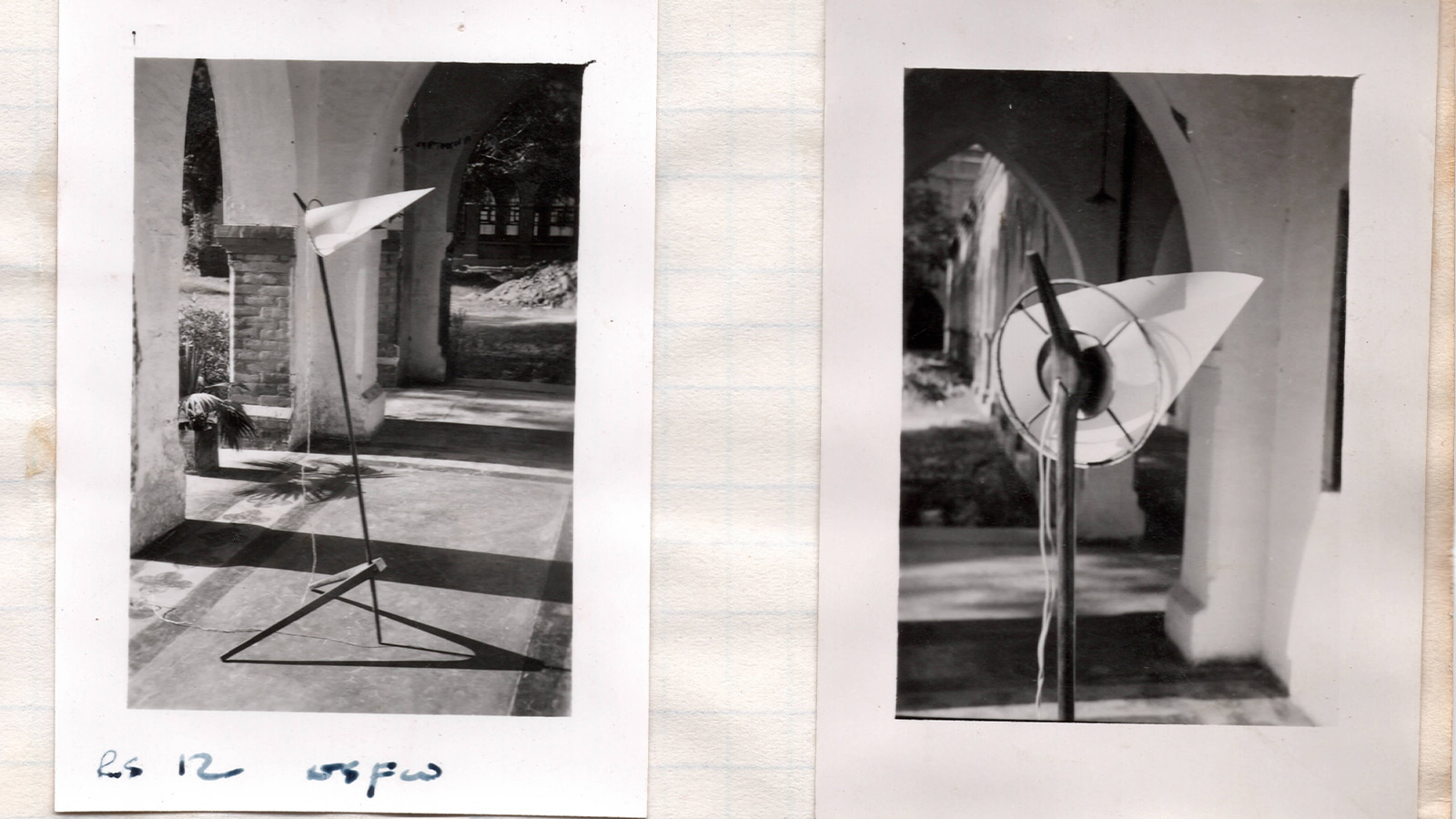 Pierre Jeanneret and Edward Armitage: tracing design inspiration in Chandigarh
Pierre Jeanneret and Edward Armitage: tracing design inspiration in ChandigarhBritish designer Joe Armitage set off for Chandigarh, India, to trace his grandfather Edward’s footsteps and recreate a photograph of the latter’s ‘Armitage’ lamp. A trail of intrigue around its inspiration lay in wait, as he reveals
-
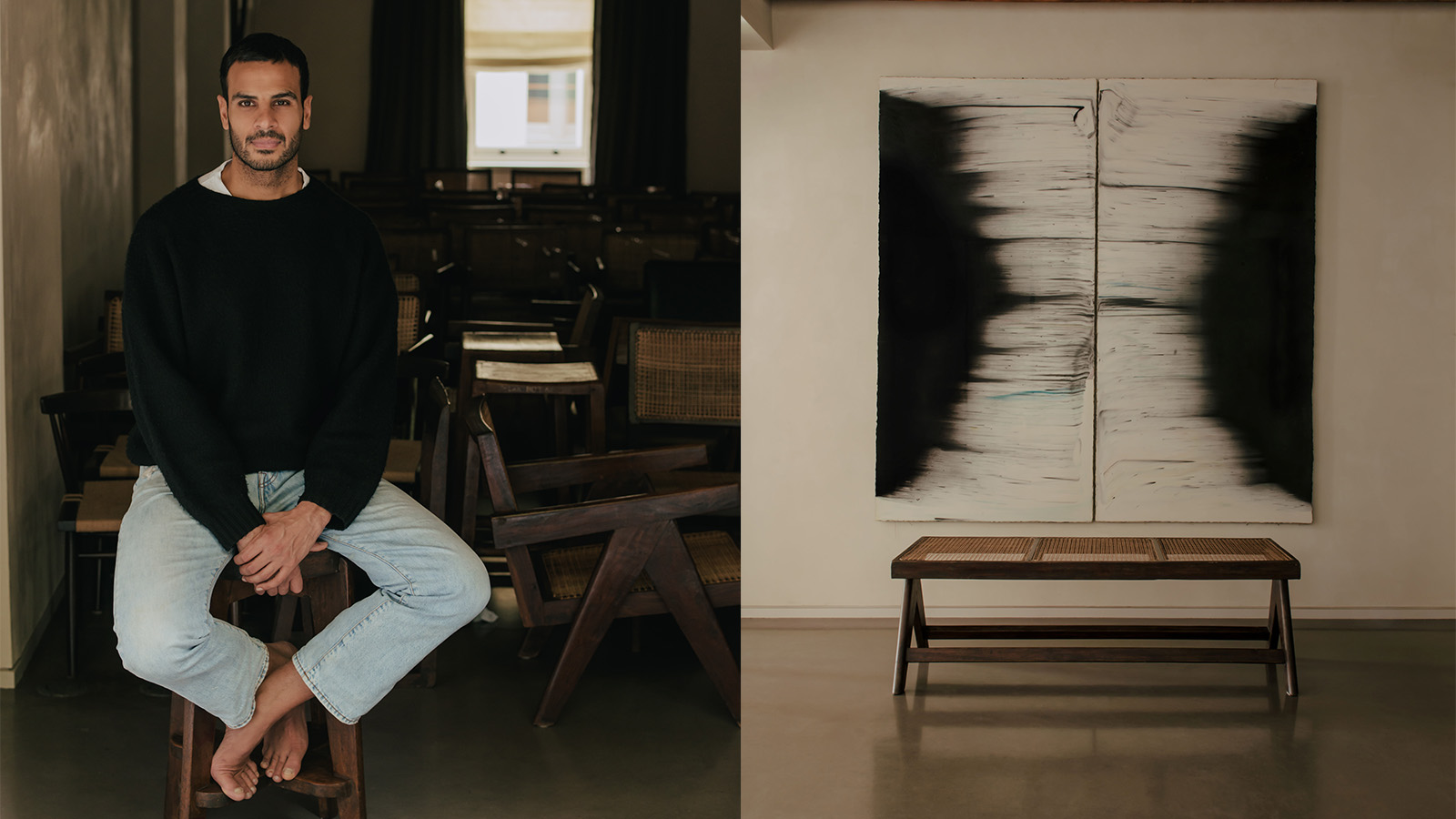 Pierre Jeanneret’s Chandigarh furniture meets South Asian diasporic art in an unusual London exhibition
Pierre Jeanneret’s Chandigarh furniture meets South Asian diasporic art in an unusual London exhibitionRajan Bijlani opens a show combining Pierre Jeanneret furniture for the Indian city of Chandigarh with works for sale by six artists of South Asian origin – in his own London townhouse
-
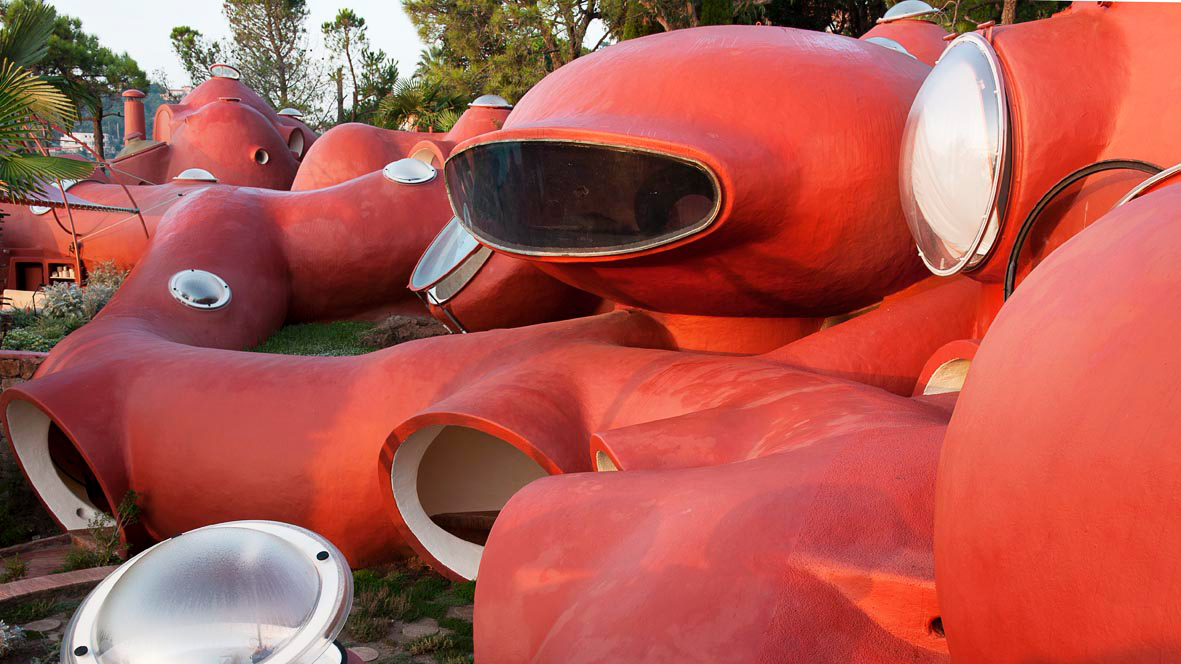 Marion Vignal on curating sensation-oriented experiences in 20th century French interiors at Maison Bernard
Marion Vignal on curating sensation-oriented experiences in 20th century French interiors at Maison BernardMarion Vignal's non-profit Genius Loci seeks to discover new insights and reflections on heritage through artistic site specific experiences
-
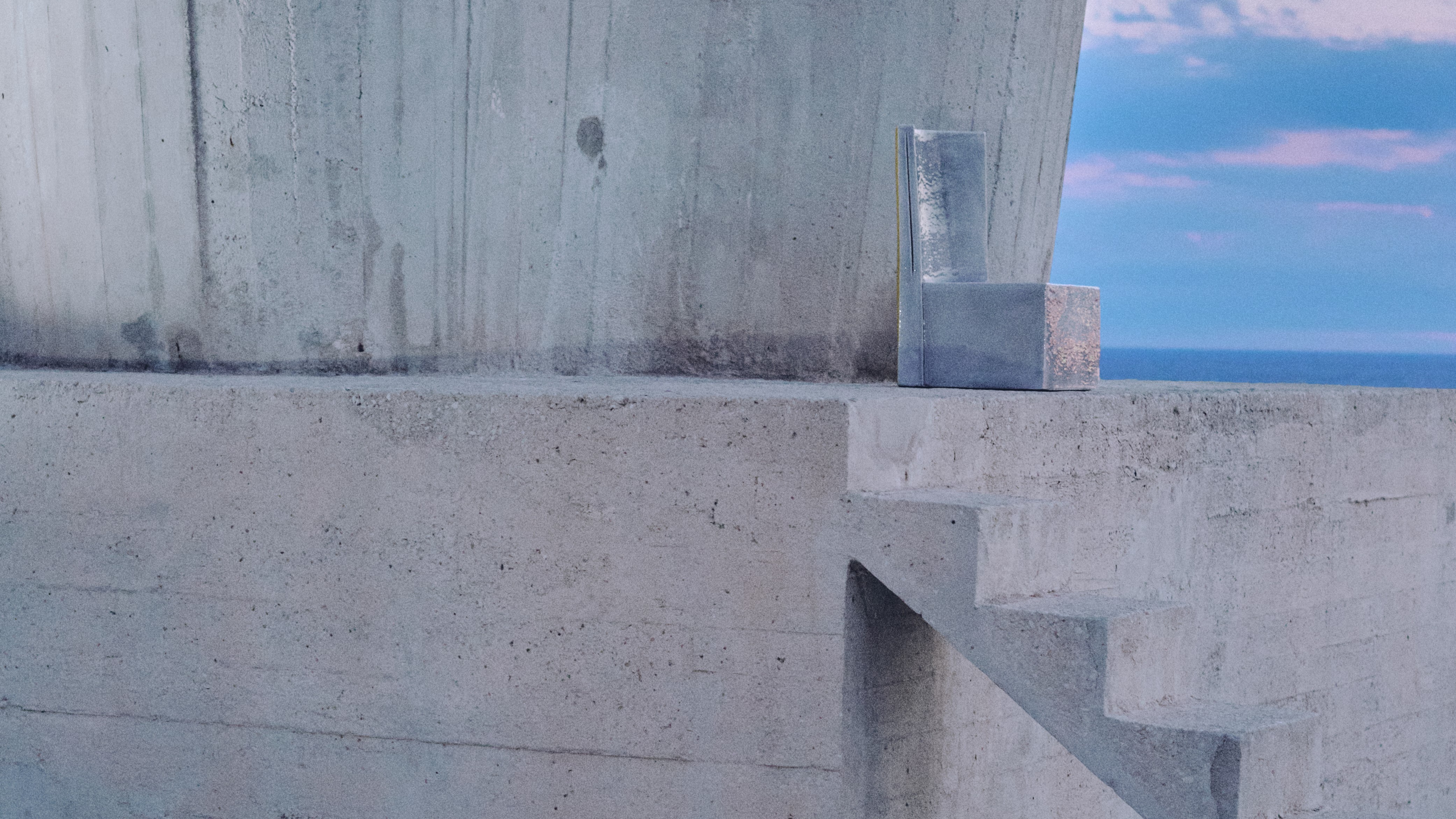 First look: French designers Marie & Alexandre move in for the summer to Marseille's Cité Radieuse
First look: French designers Marie & Alexandre move in for the summer to Marseille's Cité RadieuseEscaping The Olympics in Paris momentarily, we head to Le Corbusier’s celebrated housing block in Marseille, where Apartment 50’s exhibition concept returns for another immersive show of collectible design.
-
 ‘Air Play Moon Safari’ is an audio-visual, retro-futuristic experience
‘Air Play Moon Safari’ is an audio-visual, retro-futuristic experienceWith the ‘Air Play Moon Safari’ tour in full swing across Europe, the USA and Mexico for the rest of 2024, we explore the design of the French band's White Box stage
-
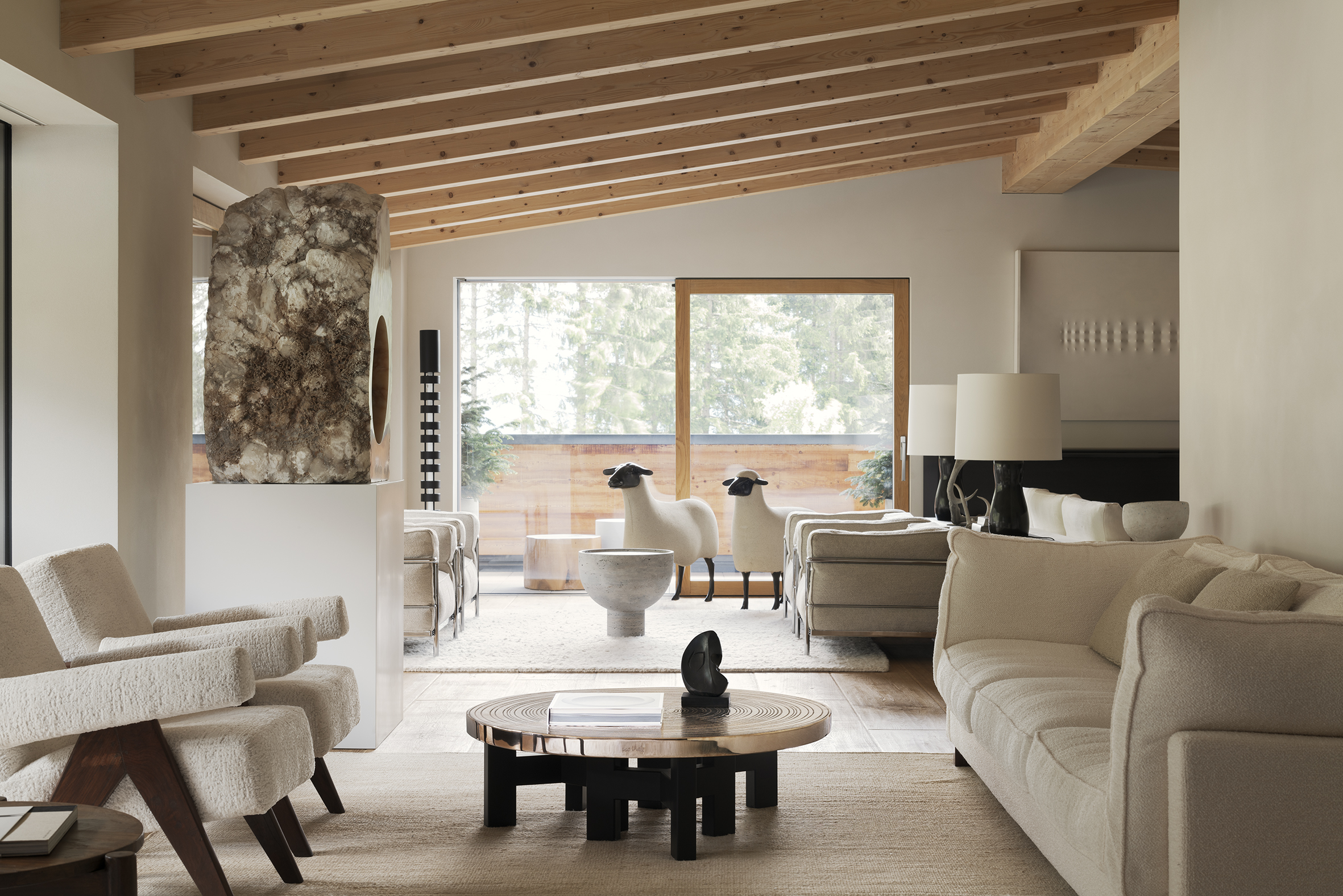 Mountain apartment by Lissoni & Partners is a blank canvas for an art collector
Mountain apartment by Lissoni & Partners is a blank canvas for an art collectorA serene blank canvas for an art collector, this mountain apartment by Lissoni & Partners features discreet palettes that form the backdrop to the owner’s art collection
-
 Loro Piana HQ’s colourful transformation brings the Andes to Milan
Loro Piana HQ’s colourful transformation brings the Andes to MilanLoro Piana HQ is transformed by designer Cristián Mohaded for Milan Design Week 2023, inspired by Andean stone piles and the colours of Argentine lagoons